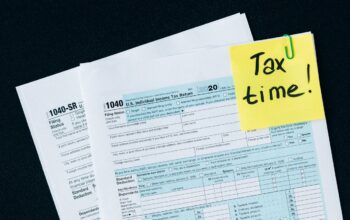Learn how to build an emergency fund before a major relocation with smart, actionable steps to avoid financial stress and risk
Moving can bring a fresh start. It’s exciting—but also risky. Without enough savings, one unexpected cost can throw your plan off track. That’s why building an emergency fund before a major relocation is one of the smartest things you can do. It protects you when things go sideways, and it keeps stress levels low during a time that’s already full of change.
Why Your Relocation Plan Needs an Emergency Fund
Relocations cost more than you expect. You might budget for rent, movers, and flights, but the real surprises often come after the move. A job might fall through. A deposit might be larger than planned. Maybe the apartment isn’t ready and you need a hotel. These situations aren’t rare—they’re common.
As a matter of fact, research shows most people underestimate relocation costs by 20–30%. If you’re not prepared, that gap comes straight from your credit card. That’s why an emergency fund is more than useful—it’s essential. It allows you to adjust to new challenges without sinking into debt or panic.
With this in mind, building a strong financial cushion before your move gives you the freedom to handle surprises calmly and make better decisions in your new location.
Calculate Your Relocation Risks First
Before you know how much to save, you need to figure out what could go wrong. Start by listing your known expenses: moving truck, gas, flights, rent, deposits, and utility setup fees. These are the easy ones. Next, think about risks that aren’t guaranteed but are likely enough to plan for.
Job delays are a major one. Some people move expecting to start work right away, only to face onboarding issues or late start dates. Health emergencies, car trouble, or missing documents can also cause financial strain, especially when moving as an expat. Another key point is that the more people involved in your move—partners, kids, pets—the more potential costs you’ll face.
As an illustration, imagine you land in a new city but your apartment isn’t ready. Now you’re paying for a hotel, food delivery, and rideshares with no income yet. That could cost hundreds in a matter of days. Estimating risks upfront helps you avoid that kind of financial hit.

Choose Services That Support Your Savings Goal
Saving money for emergencies doesn’t mean doing everything yourself. Smart spending can still protect your fund. One of the biggest expenses during a move is hiring movers. Instead of picking the first company you find, take time to compare prices, reviews, and services. Look for movers that fit your budget without cutting corners on quality.
Request multiple quotes. Ask if there are off-peak discounts, hourly rates, or package deals. Sometimes, combining packing and transport can lower overall costs. In contrast, paying extra for unneeded services may drain funds meant for real emergencies.
With this in mind, your emergency fund before a major relocation stays safe when you control fixed expenses. Every dollar saved on moving day is a dollar that stays in your emergency account, ready for real problems—not avoidable ones.
Set a Realistic Emergency Fund Target
Once you know the risks, set your savings goal. A good starting point is to save enough to cover 3–6 months of essential expenses. This means rent, groceries, utilities, insurance, and transportation. Don’t include anything optional here—this fund is for needs only.
Next, layer on relocation-specific costs. This could include furniture, extra fuel, job-hunting expenses, or a few nights in a hotel. If your move is international, plan for visa fees, legal support, or unexpected flight changes. Besides, international moves often take longer to settle, so aim closer to six months of savings.
Knowing your goal gives you focus. Instead of vaguely saying, “I need to save more,” you’re saying, “I need $6,000 to be safe.” That clarity helps you stay on track.
Cut and Redirect Non-Essential Spending
Now it’s time to find the money. Go over your last few months of spending. Highlight anything non-essential. This includes takeout, online shopping, digital subscriptions, and entertainment costs.
With this in mind, cut those expenses for now and redirect the savings to your emergency fund. You don’t need to stop living, but small changes add up fast. For example, skipping a $5 coffee each weekday saves over $100 a month. Combine that with canceling one subscription, and you’ve created a solid monthly saving habit.
Use a simple budget app or spreadsheet to track your progress. Seeing your savings grow makes it easier to stay disciplined and avoid impulse spending.

Use Side Hustles and Windfalls to Accelerate Savings
Cutting costs is one piece of the puzzle. Increasing income is the other. If you have time, take on a short-term side hustle. Freelancing, tutoring, rideshare driving, or even selling unused items online can bring in quick cash. Every dollar counts.
Save 100% of that extra income. Don’t touch it unless it’s going into your emergency fund. In contrast, most people use bonus income for fun purchases. You’ll be using it to build long-term security. That’s a smarter move.
If you get a tax refund, work bonus, or cash gift, treat it as fuel for your savings. Set mini-goals based on side income—maybe $300 in 30 days from side jobs. These small wins can build momentum.
Keep Emergency Funds Liquid and Accessible
Where you store your emergency fund matters. Keep it in a place that’s safe but accessible. A high-yield savings account or money market account is ideal. You’ll earn a bit of interest, and you can still pull the money out when needed.
As a matter of fact, avoid putting this money into stocks, crypto, or long-term CDs. Emergencies don’t wait for the market to bounce back. You need cash on hand, not a locked account.
Keep your fund separate from your main checking account. This creates a mental boundary that helps you resist dipping into it. Automate your savings transfers, even if they’re small. That way, it builds in the background without constant effort.
Monitor Progress and Stay Disciplined
Track your fund growth weekly or monthly. Use charts, goal trackers, or just a notepad. Progress you can see keeps you motivated.
Besides, accountability helps. Share your goal with a trusted friend or partner. You don’t need to share numbers—just tell them you’re saving for a relocation emergency fund. The pressure to stick with it becomes real once someone else knows.
Reward yourself for milestones. Saved your first $1,000? Celebrate with something cheap but satisfying, like a movie night at home. Just don’t undo progress by spending what you’ve saved.
If your move is delayed or your income changes, adjust your savings plan. Flexibility keeps the goal realistic. You’re more likely to succeed if your strategy matches your current situation.

Summary: How to Build an Emergency Fund Before a Major Relocation
A relocation without a financial cushion is a gamble. It leaves you exposed to stress, debt, and desperation. That’s why building an emergency fund before a major relocation is not just smart—it’s essential.
Even if your move is months away, start now. Build your plan. Cut expenses. Earn extra. Keep the savings separate and grow it steadily.
Having an emergency fund gives you freedom. It means if things go wrong, you won’t be stuck. You’ll have the money to solve problems fast. That’s a strong way to start a new chapter.



